Landslide victory
A landslide victory for one party is often accompanied by an electoral wipeout for the opposition, as the overwhelming support for the winning side inflicts a decisive loss on its rivals.What qualifies as a landslide victory can vary depending on the type of electoral system, as the term does not entail a precise, technical, or universally agreed-upon measurement.Such a decisive outcome can lead the winner to interpret it as a mandate or a tacit authorization from the public to implement their proposed policies and pursue their agenda with confidence.[5] A combination of factors–such as charismatic leadership, a favorable shift in public sentiment driven by dissatisfaction with the status quo, strategic electoral campaigning and a positive media portrayal–can create the conditions necessary for a landslide victory.[6] In this imbalanced landscape, the winning party could implement policies more easily, facing little resistance, while the severely weakened opposition may struggle to perform essential checks and balances.Starting in 1987, the Philippines evolved into a multi-party system, and coupled with the introduction of party-list elections in 1998, no party was able to win a landslide, much less a majority of seats, in the House of Representatives since then.Senate House of Representatives Alberto João Jardim, member of the Social Democratic Party (PSD) was the president of the Madeira region from 1978 to 2015.




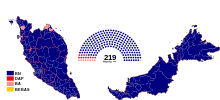



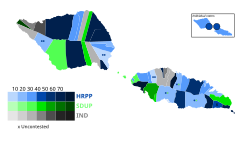
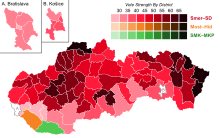
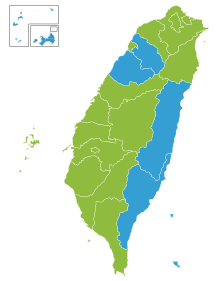





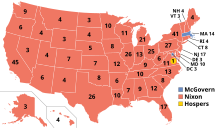


electionlandslideelectoral wipeoutchecks and balances2008 Brisbane City Council electionLiberal PartyLabor PartyCampbell NewmanLord Mayor of Brisbanetwo-party-preferred votePremier of Queensland2012 state election2021 Western Australian state electionMark McGowanNational PartyLiberalsNationals2011 New South Wales state electionBarry O'FarrellLiberal National CoalitionKristina KeneallyNew South Wales Legislative Assembly1978 New South Wales state electionNeville Wranmajority1986 Barbadian general electionDemocratic Labour PartyErrol BarrowHouse of Assembly1999 Barbadian general electionBarbados Labour PartyPrime MinisterOwen Arthur2018 Barbadian general electionMia Mottley2022 Barbadian general election1994 Brazilian presidential electionFernando Henrique Cardoso1998 Brazilian presidential election2010 Pernambuco gubernatorial electionEduardo CamposHouse of Commons of CanadaNorthwest TerritoriesNunavutconsensus government1935 Prince Edward Island general electionPrince Edward Island Liberal PartyWalter LeaProgressive Conservative Party of Prince Edward IslandWilliam J. P. MacMillan1987 New Brunswick general electionFrank McKennaNew Brunswick Liberal AssociationRichard HatfieldProgressive Conservative Party of New Brunswick2001 British Columbia general electionGordon CampbellBritish Columbia Liberal PartyBritish Columbia New Democratic Party1973 Quebec general electionQuebec Liberal PartyRobert BourassaParti QuébécoisParti créditisteUnion nationaleJulio Acosta Garcíarecently victoriousTinocoTinoquistaRepublicanLeón Cortés CastroManuel MoraRafael Ángel Calderón GuardiaCommunistGuanacasteTeodoro Picado MichalskiDemocraticCosta Rican Civil WarJosé Figueres Ferrertwo-party systemLuis Alberto MongeUnity CoalitionRafael Angel Calderon FournierCarazo administrationLuis Guillermo SolísJohnny Araya MongeCarlos Alvarado QuesadaNational RestorationFabricio Alvarado MuñozCroatia's countiesIstria County1997 Croatian presidential electionCroatian Democratic Union (HDZ)Franjo TuđmanVlado GotovacCroatian Social Liberal Party (HSLS)Zdravko TomacSocial Democratic Party (SDP)1980 Dominican general electionDominica Freedom PartyEugenia Charles2009 Dominican general electionDominica Labour PartyRoosevelt Skerrit2019 Dominican general election2022 Dominican general electionFiji Labour PartyMahendra ChaudhryParliamentIndo-FijianSitiveni RabukaSoqosoqo ni Vakavulewa ni TaukeiFijiFirstFrank Bainimarama2006 Fijian coup d'état2022 Fijian general electionhung parliamentPeople's AllianceNational Federation PartySocial Democratic Liberal Party1978 Finnish presidential electionUrho Kekkonen2018 Finnish presidential electionSauli NiinistöGaullistpresident